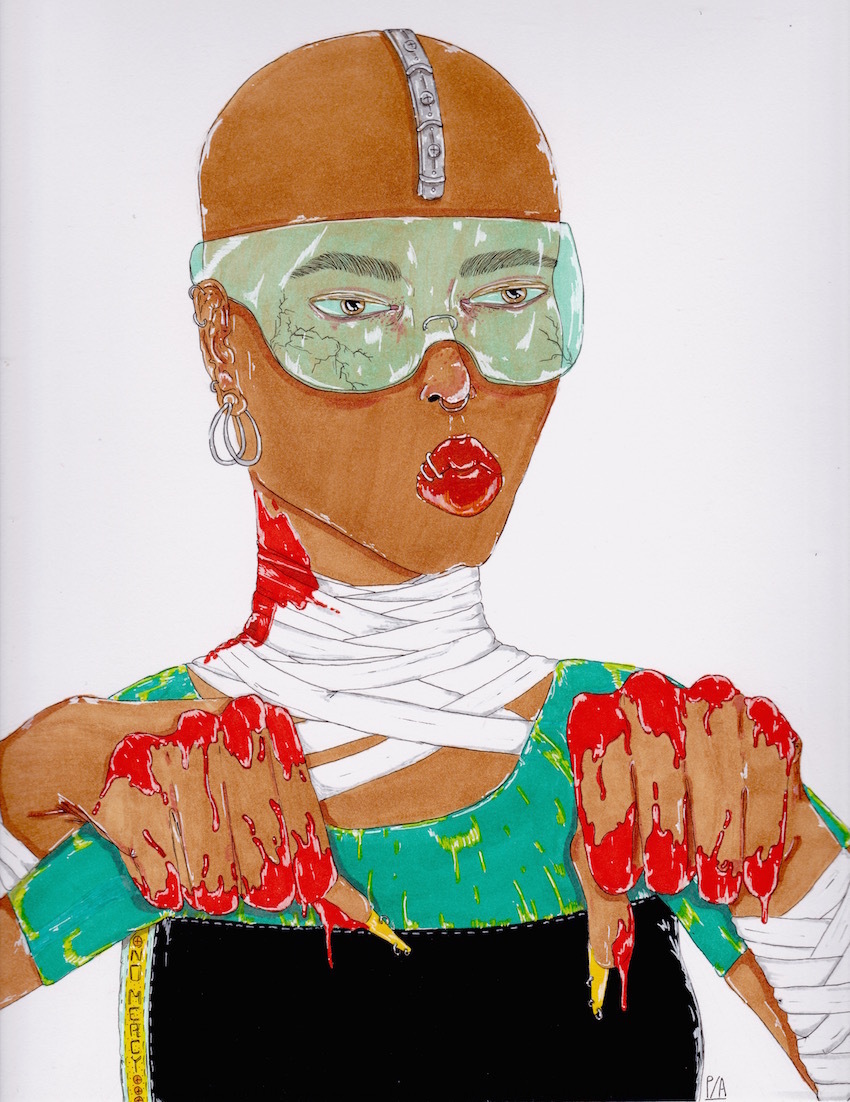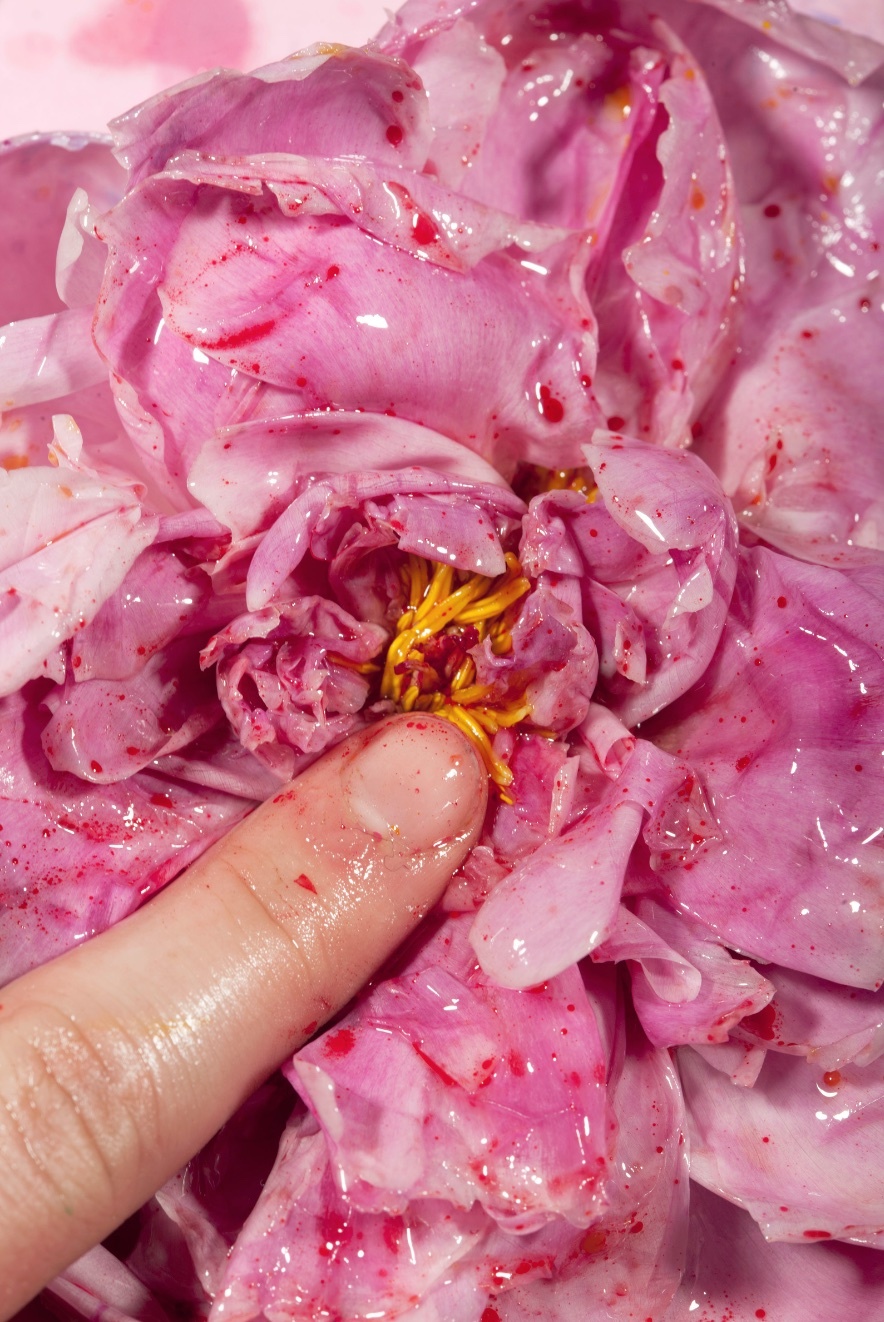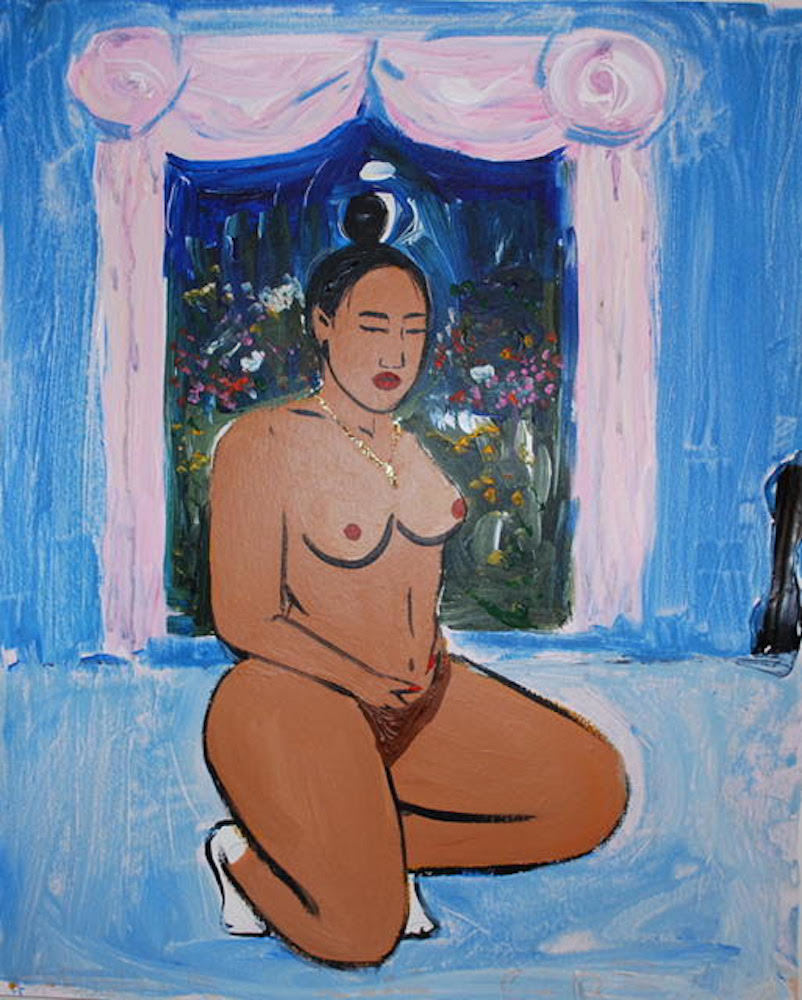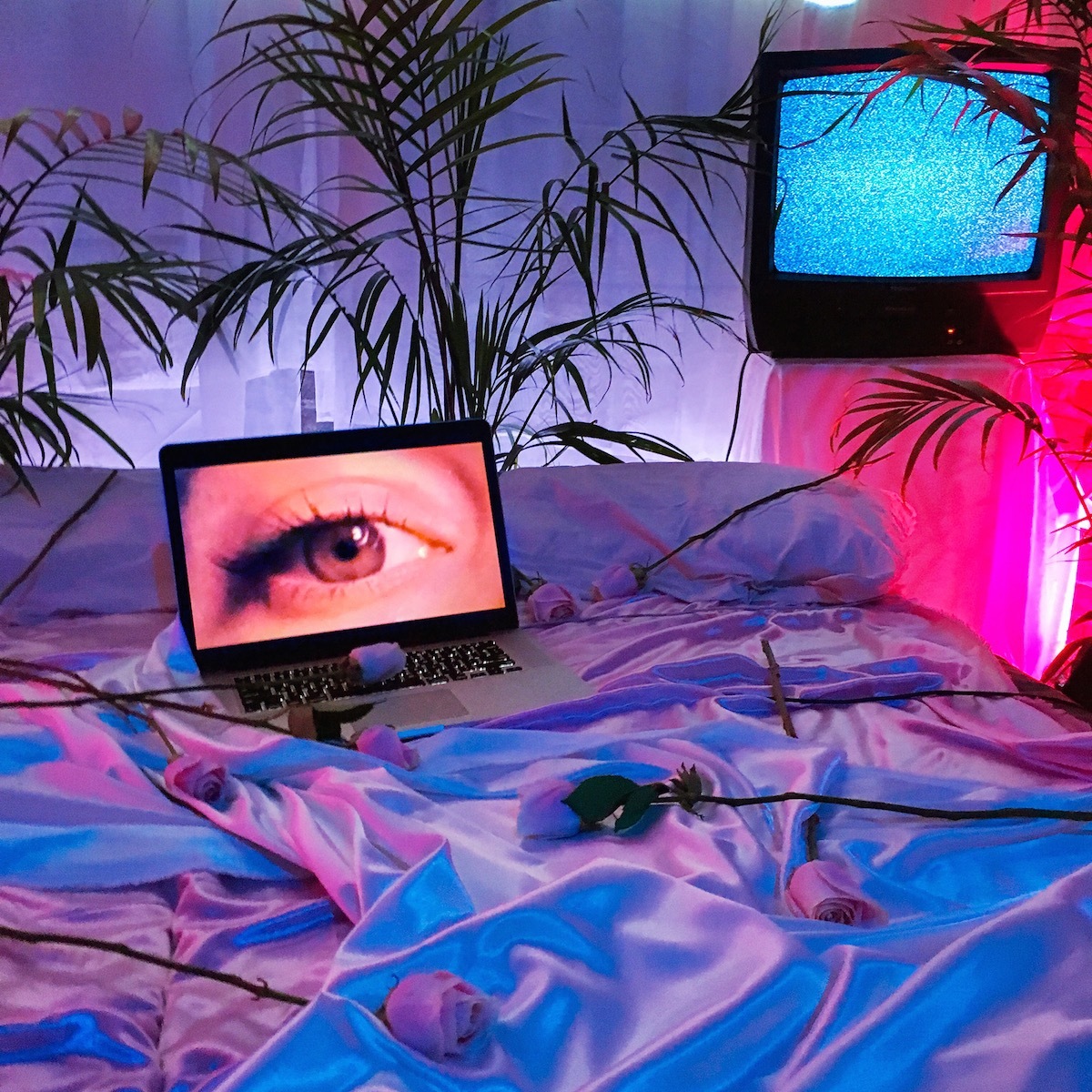Last time we spoke to Kelsey Bennett, the NYC-based photographer had just amassed a killer group of female artists for Glory Hole, a group meditation on human sexuality in the age of technology. Tomorrow Kelsey and her sister Rémy — who helped curate Glory Hole along with fellow artist Kaitlyn Parks — will open another all-female art show exploring the feminine in the context of a genderless future. Signe Pierce, Maisie Cousins, Panteha Abareshi, Sam Cannon, and Taira Rice have all contributed new works that aim to transcend normative conceptions of gender, race, and their intersections with science and technology.
Cyberfeminism, which describes the work of feminists harnessing the internet and new technologies, is a wave of art and critical thought with roots in the Riot Grrrl-era 90s. Kelsey and Rémy’s inspirations for the show go back even further: the curators cite 70s Afrofuturism and Donna Haraway’s 1985 essay “A Cyborg Manifesto” as creative stimuluses. But there’s no doubt that the cyberfeminism movement has gained new relevance in a climate of increasing skepticism about normative stereotypes and divisive binaries. Ahead of the opening of LIFEFORCE — presented by The Untitled Space and Indira Cesarine — we spoke to Kelsey and Rémy about misrepresentations of gender, transcending the human body, and the all-encompassing power of “the female.”

How did you first become aware of the concept of cyberfeminism?
An awareness of cyberfeminism kind of came from our introduction to cyborg feminism after discovering the pulp sci-fi novel The Female Man, written by Joanna Russ. We became really interested in exploring the essence driving us as opposed to the gender constructs that were traditionally defining us and the concept of transcending that were so present in cyber and cyborg feminism. There is also an irreverence and humour integral to these movements that attracted us. Whether or not art is defined by these genres, we were drawn to depictions or representations of women that were extreme in a sense — that annihilated these traditional standards of acceptability or beauty. It was something beyond what used to be considered “gender bending'” or androgyny that was more akin to an alien life form or a beautiful monster. Not just a gender-fluid human but a hybrid human, an alien, or star child. There is an anarchic power in a release from the human form that we were seeing represented in a lot of the art around us.

Why was it important that all the artists in the show are female?
We did reach out to male artists as well but never got responses from them. The themes we’re looking at and exploring relate directly to the female experience. A lot of our focus ended up being on women’s intersection with science, feminist, and Afrocentric science fiction, and a reclamation of a position of power — the woman being the driving force in nature. This position has been controlled and exploited historically by a white male ruling class.
There is an amazing sub-genre of science fiction dominated by women and people of color. In a sense because this genre has been marginalized these writers were able to express ideas and concepts that would be considered unimaginable in the mainstream at the time of their publication. Issues like misogyny, homophobia, racism — in a way [talking about those subjects] was only acceptable based on the cloak of fantasy or speculative fiction. There was a freedom and in a sense an emancipation in that kind of creative outlet that set the stage for the kind of thinking that would eventually implement change. It was also important to us to examine the relationship between women and the evolution of science and technology, and how structures pertaining to those fields and studies have shaped our society when only one dominant gender and race is in control of that development.

How do you know the artists contributing to this show?
One of the artists, Amanda Turner Pohan, we’ve known since we were about five and six years old. We’ve been in contact throughout the years but fairly recently reconnected on an artistic level. She is creating work using her own bodily fluids and is showcasing a virtual reality video which deals with the ways in which the body is disciplined, policed, coded, hacked, leaked, bought, and sold. Her pieces will exist in the gallery as an installation resembling a doctor’s office waiting room.
Two of the artists, Sam Cannon and Tafv Sampson, we worked with on the last exhibition we co-curated, Glory Hole. Sam creates these incredible GIFs or short videos which depict beautiful mutations of the human form and Tafv’s piece for LIFEFORCE is a series of images which defy the codified stereotypes of the housewife. Signe Pierce we met at SPRING/BREAK Art Fair — we were showing down the hall from her. Maggie Dunlap, who was also showing in the same space with Signe at SPRING/BREAK, is a friend of ours. Her piece deals with the intersection of villainization, victimization, and idolatry of females throughout time. Some of the other artists we reached out to blindly — Maisie Cousins, Parker Day, and Juno Calypso are all people who we’ve been following and admiring for a bit.

Did you submit work yourselves and can you describe it?
Kelsey: I’ve created a set of characters that will help illustrate the social mores of an alternate reality where gender does not exist, form is transcendent, and time moves faster but is also limitless. One of the images is called Artura10 and the other is Olympia44. Rémy poses as Artura and I shot myself as Olympia. The names are references to characters in one of our favorite novels, Geek Love by Katherine Dunn.
Rémy: My work is an appropriation of a Playboy spread from the 80s with the actress Anne Carlisle from the cult East Village set movie Liquid Sky. Carlisle plays both a male and female character in the film and the Playboy spread has her depicted as both. LIFEFORCE is focused on the female but in a deeper sense is looking to transcend that categorization.

How does the show explore the intersection of race and gender?
Panteha Abareshi created an amazing illustration entitled The Future is Female, which is very emblematic of Afrofuturism. Her drawings depict almost primarily people of color and mainly women, and she speaks about her desire to normalize those depictions in art in the face of a Eurocentric beauty that is so prevalent — not just in media and popular culture and fashion, but unfortunately also in art. Eradicating the tokenism in the representation of people of color in fiction is integral to the work. The exploitation of women in the name of science cannot be ignored, for example forced sterilization, torture in the name of gynecological research, denial of reproductive rights. I think that feeds into the impetus behind the themes in the show.
I was reading something interesting the other day — which Hilary Rose wrote about in her book Love, Power, and Knowledge — about how the white male’s utopia is often the female’s dystopia and vice versa. The male utopia pushed to the extreme was described as something resembling the soap opera Dallas — dripping with excess and money and greed and the control of women, domination of territories, the crushing of enemies. I couldn’t help but think that we are witnessing the fruition of that dystopia with the rise of Trump and people like [Mike] Pence. I believe we need to counter that energy with equal amounts of force but from the other end of the spectrum. What could a contrasting utopia look like for us?
“LIFEFORCE” is on view at Untitled Space from July 27 through August 6, 2016. A reception will be held tonight from 6-9pm, and an artist talk will take place August 3. Find out more on the gallery website.



Credits
Text Hannah Ongley
Images courtesy of Color Brigade Media
